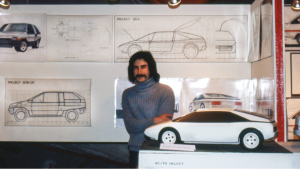Every day researchers, designers and scientists are trying to reduce the carbon footprints of the various industries around the world, in an attempt to reduce the staggering effects of the global climate crisis.
Everyone is looking towards replacing the use of fossil fuels and non-biodegradable materials with more renewable and sustainable resources. While major steps have been taken in industries such as motoring, construction and manufacturing, the aviation industry still remains a huge contributor of CO2 emissions in our atmosphere.
Liam Megill and his non-profit organisation AeroDelft are attempting to tackle this problem by designing and building the world’s first liquid hydrogen-powered aircraft. Why hydrogen, you may ask? Because unlike jet fuel, the liquid hydrogen-powered fuel cell’s primary emission is water.
The student team trying to create this aircraft is made up of 35 students from 23 countries around the world. They are from the Delft University of Technology in the Netherlands.
Their project, ‘Project Phoenix’ is a liquid hydrogen motor glider with a cruising speed of 200km/h and a range of about 2000km on one tank of hydrogen.
In April, the current model, a 1:3 scale model of the Phoenix, which has a 5.7 metre long wingspan, was unveiled. Megill and his team are hoping to launch the maiden flight of the Phoenix in 2021 from the Rotterdam Airport in Amsterdam.
The full-scale aircraft, according to the AeroDelft website, features perforations of the wingspan to reduce drag, sensors and vents for the detection of potential hydrogen leakages, as well as an electric battery in the event that the hydrogen fuel cell fails.
As eager as the world may be revolutionise air travel,by making it less harmful to the environment, many scientists and skeptics are wary of the use of hydrogen as a fuel source. The Hindenburg disaster springs to mind.
“In the public’s mind, they still think of hydrogen as a very scary, difficult substance to use. But that is not really the case,” said Megill in an interview with The Guardian.
Megill, however, is aware that commercial flying using hydrogen-powered cells remains something far in the future. This is due to the methane-heavy production process of hydrogen.
Megill and his team they simply want to make the world aware, and convince the aviation industry, that the idea of using hydrogen as a fuel for air travel is not impossible. With the help of major investors the hydrogen-powered aircrafts may become a reality.
Read More:
Biofuels company Fulcrum powers aircrafts with household garbage
The first solar-powered flight around the world
Catch an autonomous flying drone to work








